Issue 7, July 22, 2022
Common Burdock
Common burdock (Arctium minus) is a biennial, broadleaf weed that reproduces by seed. It forms a rosette with a large, fleshy taproot in its first year. In its second year, the stems grow erect reaching 3 to 5 feet in height. They can be reddish in color. The stems are much branched and hairy. The basal leaves are large at 15 by 20 inches. They are hairy and roughly heart-shaped with a hollow petiole. The underside of the leaf is light green and woolly, while the upper side is darker and smoother. The stem leaves are smaller, alternately arranged, and egg-shaped. While considered a biennial, blooming may not occur until the third or fourth year. The flower heads are produced from July to October and look like that of some thistles. Flowers are composed of small red-violet disk flowers, which dry down to 1/2-inch burs. The outer bracts have velcro-like hooks that readily catch on clothing and animal fur. This allows for widespread seed dispersal. This plant only reproduces by seed, and one can produce about 15,000 seeds. Dead stems will persist into the following spring.
Common burdock can be found in full sun or part shade growing along fencerows and roadsides. It is a weed of landscapes and agricultural crops. Frequent mowing can be used to help control this plant. Digging or even simply slicing through the taproot about 3-4 inches below the soil surface can be effective. Remove seed heads before seed set to prevent further spread. Herbicides such as glyphosate, 2,4-D, dicamba, or clopyralid can also be used. Be sure to carefully read and follow all label directions.
There are a few similar species that may be confused with common burdock. While the flowers may resemble that of some thistles, thistles do not have large leaves. While common cocklebur has similar hooked spines and leaves, the stems are brown-to-purple spotted and the leaves are rough and scratchy. Rhubarb has large basal leaves with reddish stems but the stems are glossy smooth and not hairy like that of common burdock. The hairs on the stems should cue you in that they would NOT be tasty in a pie. Before consuming any plant, be sure to properly identify it first and confirm with a reliable source that it is edible.
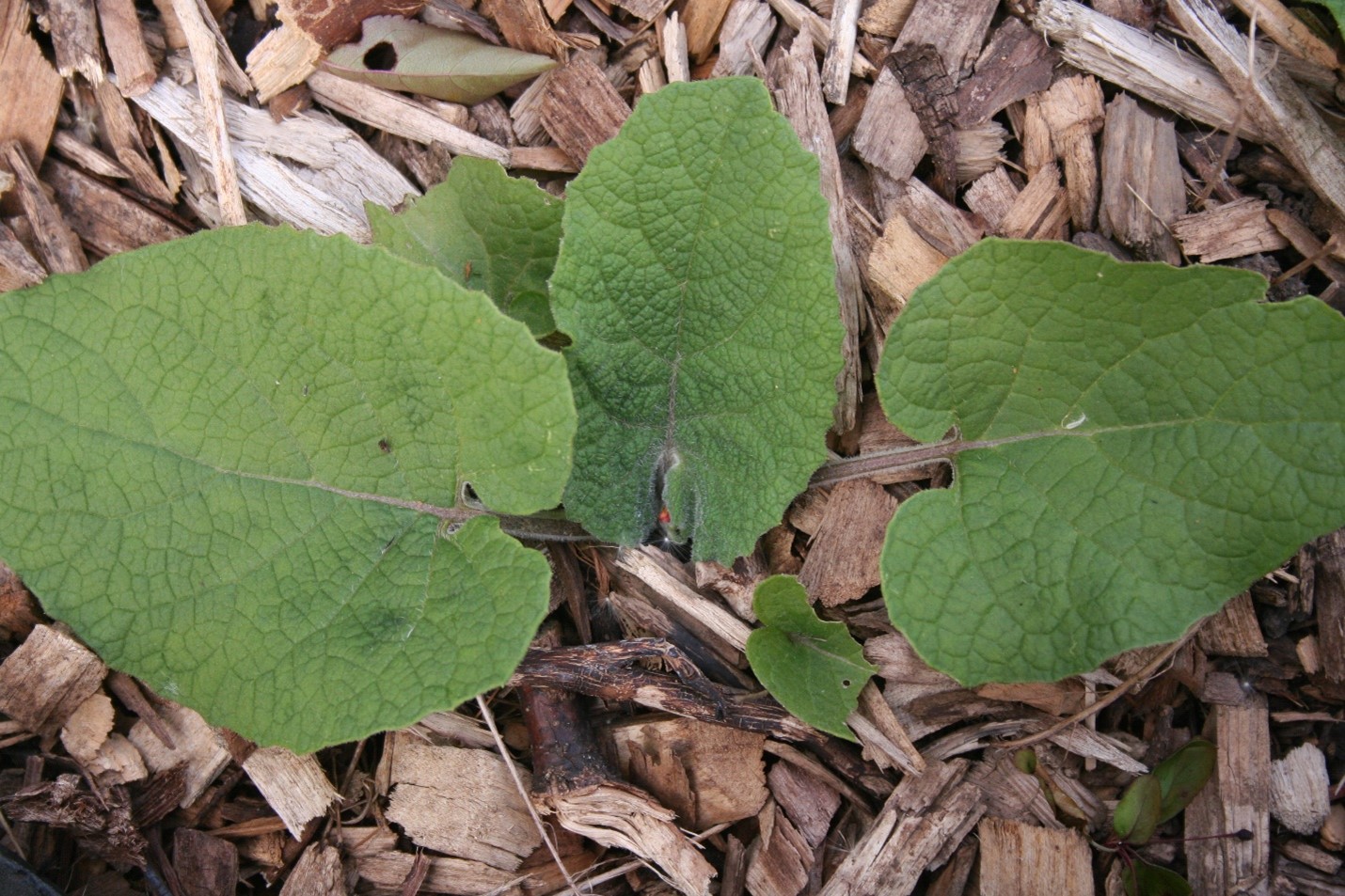
Young Common Burdock in mulch, Michelle Wiesbrook, University of Illinois.

Common Burdock hairy stem, Michelle Wiesbrook, University of Illinois.
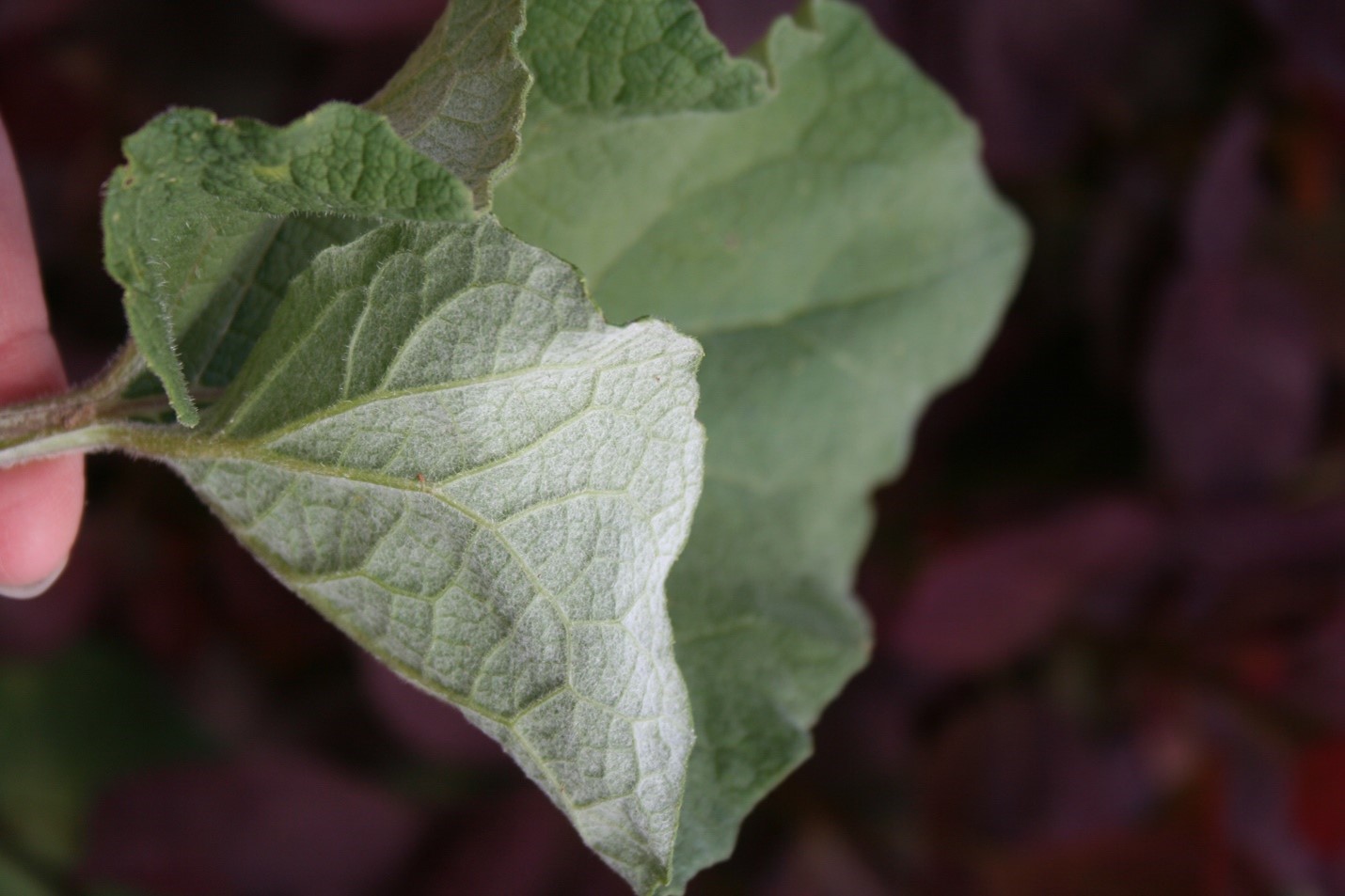
Common Burdock woolly underside of leaf, Michelle Wiesbrook, University of Illinois.
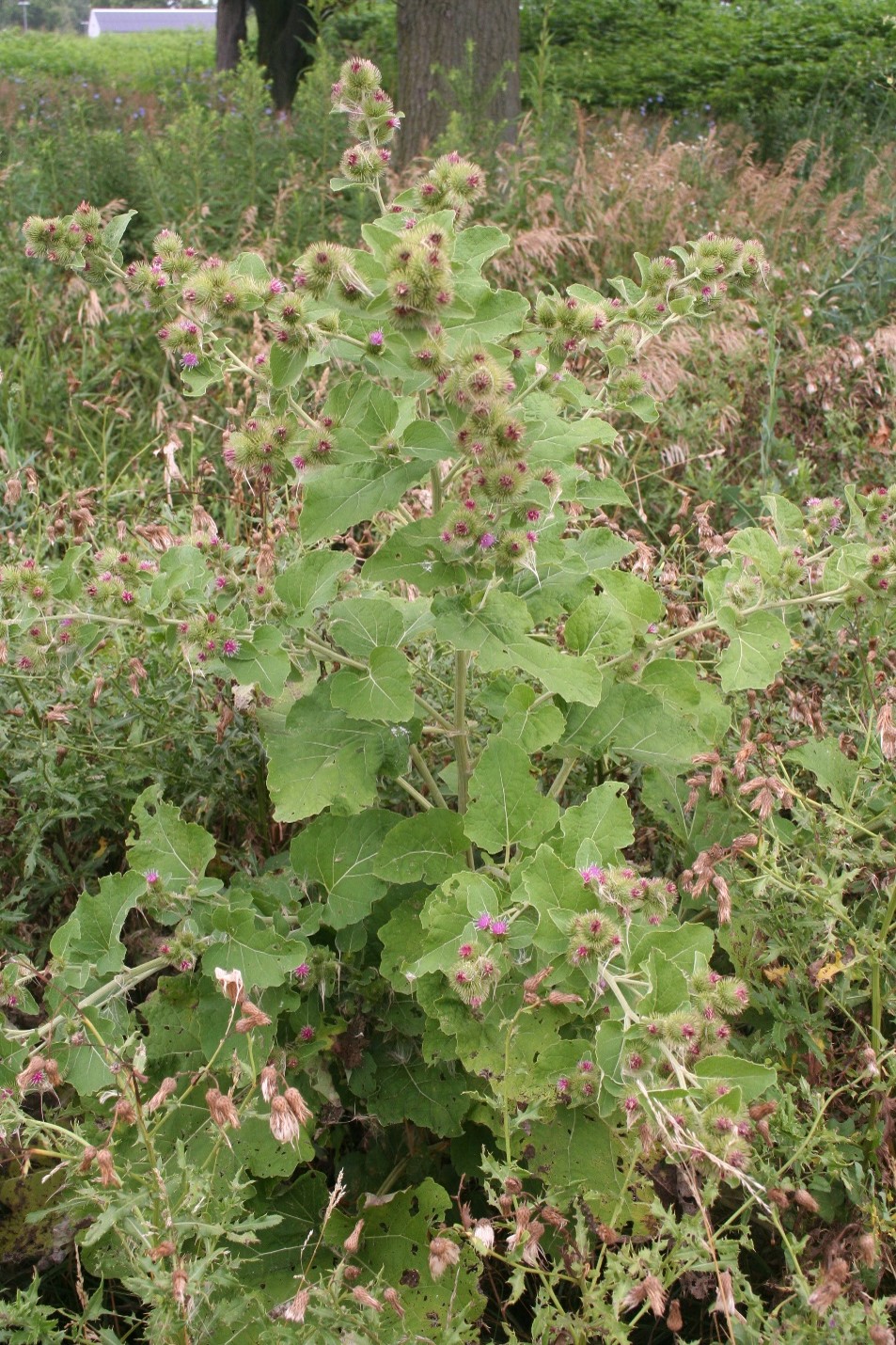
Mature Common Burdock, Michelle Wiesbrook, University of Illinois.
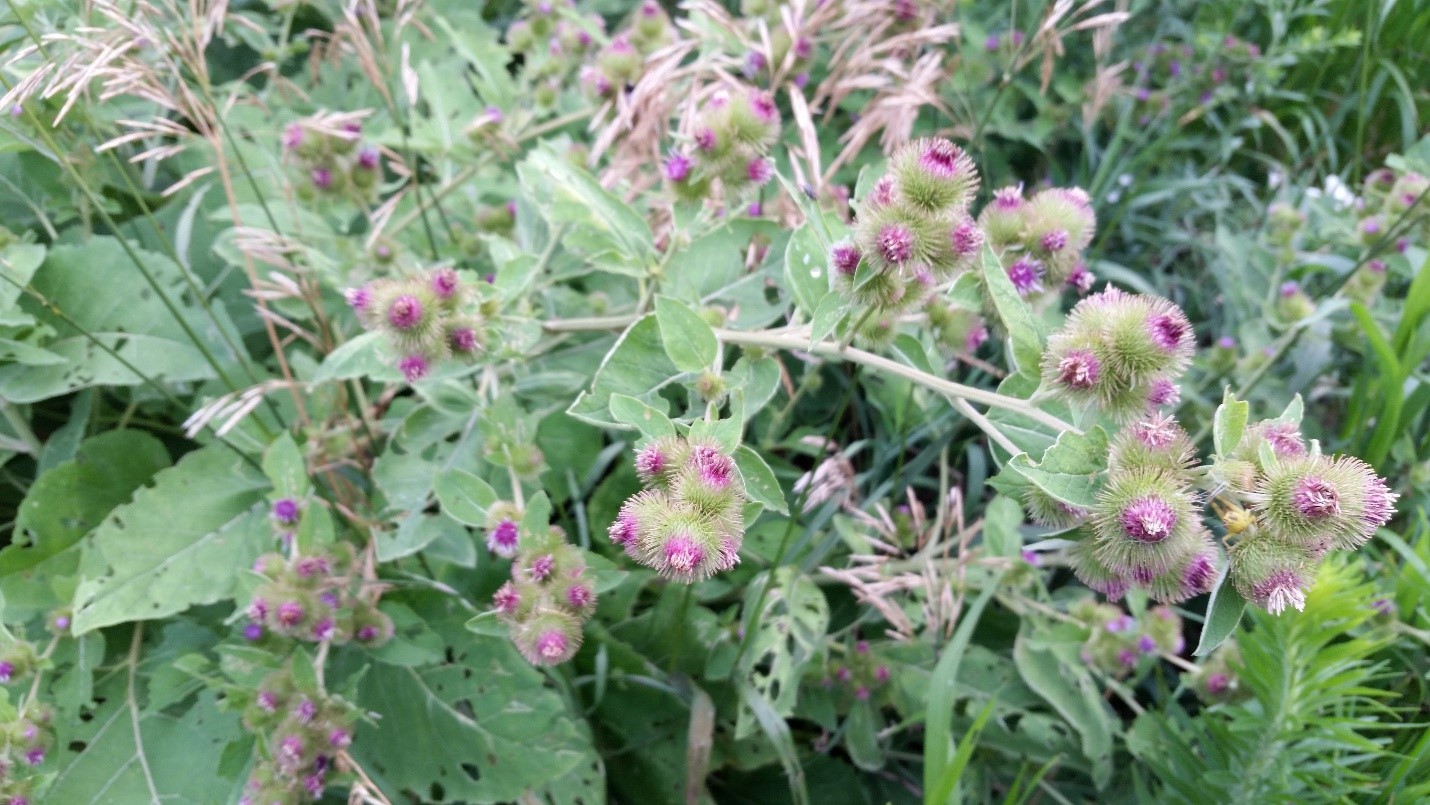
Common Burdock flowers, Michelle Wiesbrook, University of Illinois.
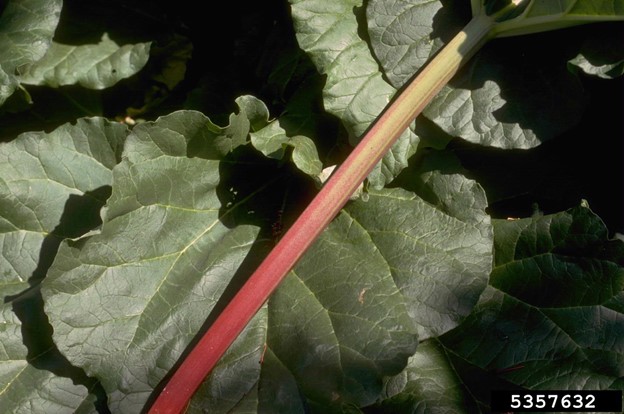
Garden Rhubarb, Howard F. Schwartz, Colorado State University, Bugwood.org

Common Cocklebur, Jan Samanek, Phytosanitary Administration, Bugwood.org
Author:
Michelle Wiesbrook